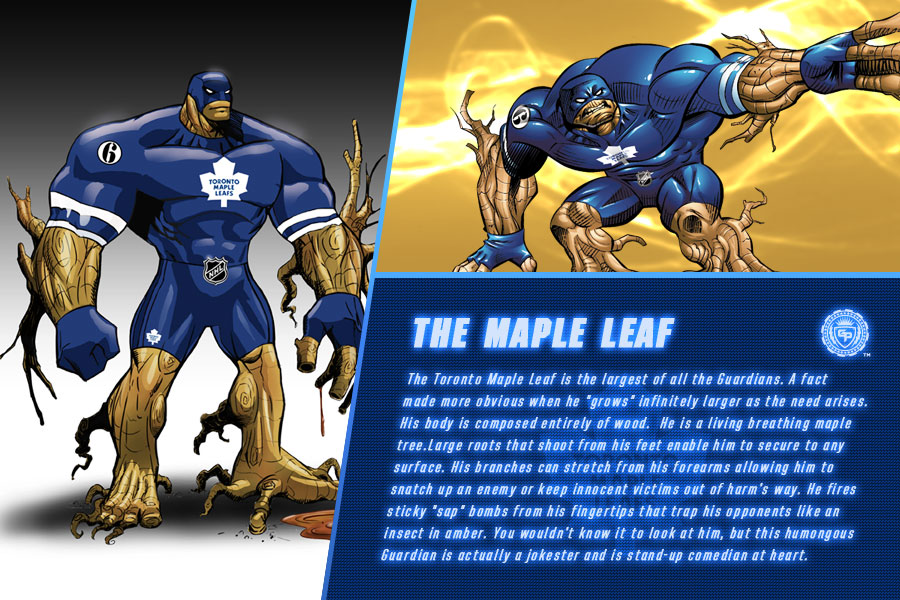Sentinel is driven by the colored tracks... the timer, and each PC's HP track.
The timer and the HP track both progress colorwise: Green to Yellow to Red.
Powers are colored: Green are always usable, yellow only once either or both of HP and timer are in yellow; red likewise when either/both are in red. Red are the most potent abilities.
PC and Villain Actions are 3 dice: one from a quality, one from a power, and one from the trackers... Not all characters get worse with damage... Some go from low in green (d4 or d6) up to d8 or d10 in red. You then take one of those three; if using standard moves in standard ways, it's the middle die. There are 5 standard moves: Attack, Defend, Boost, hinder, Overcome; there are three more that are special ability gated but are essentially default moves: heal, create item/lieutenant, create minions.
PC's who run out of HP are "Out" - but that doesn't take them out of play. Every character has a specific out ability... they're not strong, but they do matter.
Death is only on the table when the victim chooses.
The real special sauce is a combination of the ability to restore a box on the tracker, and that the environment gets a turn.
The environment having a turn is really a nifty idea - you don't forget it!
It's grounded in a storygame mode; Cam Banks and the Bakers (Meg and Vincent) consulted on the game. Lots of say yes... Narrate until something is a power or is a standard move, then resolve it, hand off to someone else. Lots of complicated successes.
The trio of badguy levels: Villains, Lieutenants, and Minions... Villains work like PCs, but with different character gen. Minions and Lieutenants both are rated with a single die. Minions typically have one or two allowed moves; when you hit them, you either step them down or kill them outright. Lieutenants, if hit really hard, might be taken out... but normally they step down if damage beats resistance, shrug it off otherwise. When they act, Minions typically are restricted to one or two move types; Lieutenants generally have all 5 standard moves and may have a single special move/power.
Minions matter in the long run, but die easily, especially when inside area attacks...
Lieutenants are much harder, and represent credible threats - that the rolls that minions step down upon are no effect on Lieutenants is a huge factor. (double the resistance, and the LT pops like a minion.)
Player Character gen is also interesting. There are multiple ways to do it in the core... as a Traveller fan, I like the random mode... which is roll a few dice, and pick from the numbers of any given die, or the sum of two, and take what's listed. Each step adds details and special abilites. And yet, lots of meaningful choices... Also, characters wind up with two Principles... which provide a bonus when used...
The oddest from my players was "Maria"... who was haunted by snooping spirits, and was able channel and use them to get views from alternate points, and to have them scare her foes.
The most boom was "Rad Blaster" - a detective with public super ID, and a penchant for a 2 kT dirty fizzle on a bad day. (His red was a Nuclear d12 based area attack... keeping high die.
Another fun character was Andvari the Alien... an illusionist insectoid presenting a human appearance... until in the red.
All three were made using the random as a starting point, by the RAW...
Villain gen is similar, but different tables.
I'm not a fast GM. But for me, SC runs faster than just about anything else. It's just enough narrativist elements to have that storygame flow; just enough trad to not alienate the "5E as minisgame" gamers too much.
To recap in brief, they key feel elements:
- Environment Turns
- Timers galore
- Minions, Lieutenants, and Villains
- 3k1 rolling
- interesting minigame character gen
- Many meaningful choices
- Random mode reduces choices to 2 to 5 of 20+...
- Play is fast




